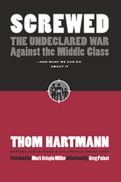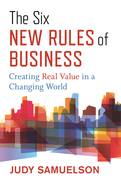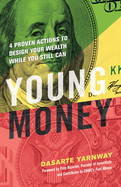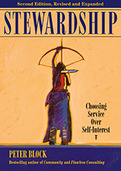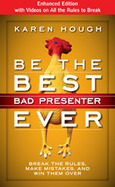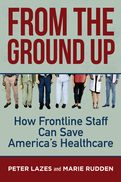2007
- By the bestselling author and XM and Sirius Satellite radio host heard on more than eighty radio stations coast to coast seven days a week
- Reveals how the middle class, nurtured as the backbone of democracy by our Founding Fathers, is being undermined by so-called conservatives
- Shows how we can reverse the erosion of the middle class and restore the egalitarian vision of the Founders
- Expanded edition with a new chapter on immigration and a new afterword by Greg Palast
Dynamic forces are conspiring to clarify the new rules of real value creation—and to put the old rules to rest. Internet-powered transparency, more powerful worker voice, the decline in importance of capital, and the complexity of global supply chains in the face of planetary limits all define the new landscape. As executive director of the Aspen Institute Business and Society Program, Judy Samuelson has a unique vantage point from which to engage business decision makers and identify the forces that are moving the needle in both boardrooms and business classrooms.
Samuelson lays out how hard-to-measure intangibles like reputation, trust, and loyalty are imposing new ways to assess risk and opportunity in investment and asset management. She argues that “maximizing shareholder value” has never been the sole objective of effective businesses while observing that shareholder theory and the practices that keep it in place continue to lose power in both business and the public square. In our globalized era, she demonstrates how expectations of corporations are set far beyond the company gates—and why employees are both the best allies of the business and the new accountability mechanism, more so than consumers or investors.
Samuelson's new rules offer a powerful guide to how businesses are changing today—and what is needed to succeed in tomorrow's economic and social landscape.
2018
If you're under 40, you may not have a lot of money, but you're loaded with a valuable resource: time. It probably doesn't seem like it when you're looking at your student loan debt or scraping up rent money each month, but being young is the ultimate advantage when it comes to building wealth. Starting now means you can experiment, learn from mistakes, bounce back from setbacks, and steadily build your legacy.
Rising-star financial advisor Dasarte Yarnway offers a simple 4-step process you can use to become a Master Wealth Builder. It begins with having the right mindset—wealth begins in your mind and then is built every day through intentional actions. Yarnway examines:
• The 4 most common financial pitfalls and how to avoid them
• The 5 habits all Master Wealth Builders engage in
• The 3 best ways to master your income
• 7 simple practices for controlling costs
A worksheet helps you assess exactly where you are financially, where you want to go, and how you're going to get there. So start now! As Warren Buffett said, “Someone is sitting in the shade today because someone planted a tree long ago.” The sooner you plant, the more shade you'll have.
2013
We still face the challenge of fostering ownership and accountability throughout our organizations. Despite all the evidence calling for profound change, most organizations still rely on patriarchy and control as their core form of governance. The result is that they stifle initiative and spirit and alienate people from the work they do. This in the face of an increasing need to find ways to be responsive to customers and the wider community.
Peter Block insists that what is required is a dramatic shift in how we distribute power, privilege, and the control of money. “Stewardship,” he writes, “means giving people at the bottom and the boundaries of the organization choice over how to serve a customer, a citizen, a community. It is the willingness to be accountable for the well-being of the larger organization by operating in service, rather than in control, of those around us.”
Block has revised and updated the book throughout, including a new introduction addressing what has changed—and what hasn't—in the twenty years since the book was published and a new chapter on applying stewardship to the common good of the wider community. He covers both the theory of stewardship (in particular how it ameliorates the shortcomings of traditional leadership) and the practice (how it transforms every function and department for the better). And he offers tactical advice as well on gearing up to implement these reforms.
This enhanced edition of Be the Best Bad Presenter Ever includes 13 exclusive videos that show you how to be a memorable, effective presenter by breaking all the rules. These videos offer a unique learning experience as author Karen Hough walks you through the good, the bad, and the ugly in the world of presentations. Watch as she and her colleagues model how to communicate ideas with care and authenticity, while poking fun at the ridiculous habits that are considered the norm in giving presentations.
* Shows how ripping up the traditional presentation dos and don'ts will make you a better, more relaxed, and more effective presenter
* Takes on over a dozen pieces of "good" presentation advice and reveals why they actually make you worse
* Features stories of people who not only were able to become great presenters by being "bad" but actually came to enjoy it
Gold Honoree, Benjamin Franklin Digital Book Awards
Most of us have received unhelpful advice like this before: cling to the podium, when in doubt use bullet-points, and suppress your nerves before they suppress you. Thankfully, Karen Hough debunks these myths and shows you how to be a presenter who makes a genuine connection with the audience--the type of connection that inspires people to take actionWith 25 minutes of lively and engaging video, this enhanced edition copy will change everything you thought you knew about presentations. Join Karen Hough as she teaches you how to be the best bad presenter you can be, so that what you say will actually make a difference.
With 25 minutes of lively and engaging video, this enhanced edition copy will change everything you thought you knew about presentations. Join Karen Hough as she teaches you how to be the best bad presenter you can be, so that what you say will actually make a difference.
If you're like most people, the phrase "You'll be giving a presentation" is on a par with "It looks like that molar will have to come out." Well, let's be honest: you'd prefer the surgery, wouldn't you?
One reason most people regard public speaking as a nightmare is that they have to be "perfect." They drive themselves crazy trying to conform to all sorts of handed-down rules that tie them up in knots and put their audiences to sleep. But Karen Hough knows that by throwing out those rules, relaxing, being yourself, and even making "mistakes," you'll connect with your audience much more effectively than the guy with the impeccable PowerPoint presentation.
Hough has used her unique approach to take the anxiety out of one of the greatest fears in business. It's authenticity and passion that win people over, she says, not polish. It's why people trust vlogs more than commercials and user reviews more than ads. But you can't be authentic if you're following constraining rules that drain the life and personality out of your presentation.
Hough debunks over a dozen myths about presenting to make it more fun and natural for everybody. She explains why mirrors are evil, why you should never end with questions, what the real purpose of any presentation should be, and much more. You'll discover how to embrace and develop your own style and communicate your message in a way that's all "wrong" according to the experts and that your audiences will find compellingly right.
If presentations really didn't matter, we'd all just send memos. There are a million ways to share information out there, but the more we digitize, the more we long for human connection. By following Karen Hough's wise and witty advice, you'll avoid being forced to become one more robot behind a podium and be freed to be a living, breathing, occasionally clumsy real person whose passion is powerful and infectious.
2020
—Amy C. Edmondson, professor, Harvard Business School, and author of The Fearless Organization
All Americans deserve and should have access to high quality, affordable healthcare services delivered by professionals who have sufficient time and resources to care for them. This book offers proven and practical approaches for redesigning healthcare organizations to be less fragmented—and more patient-centered—by tapping into the experiences of staff on the front lines of patient care.
Peter Lazes and Marie Rudden show how collaboration and active communication among administrators, medical staff, and patients are a core element of a successful organizational change effort. Through case studies and the direct voices and experiences of frontline workers, they explore exactly what it takes to effectively engage staff and providers in improving the patient care shortcomings within their institutions.
This book not only is a manual detailing what can be achieved when frontline staff have a direct voice in controlling their practice environments but was written to show how to accomplish transformative changes in how our hospitals and outpatient clinics work. At a time when the massive gaps in our healthcare systems have been laid bare by the fragmented responses to the COVID-19 pandemic, this book offers hope and a plan for change.


